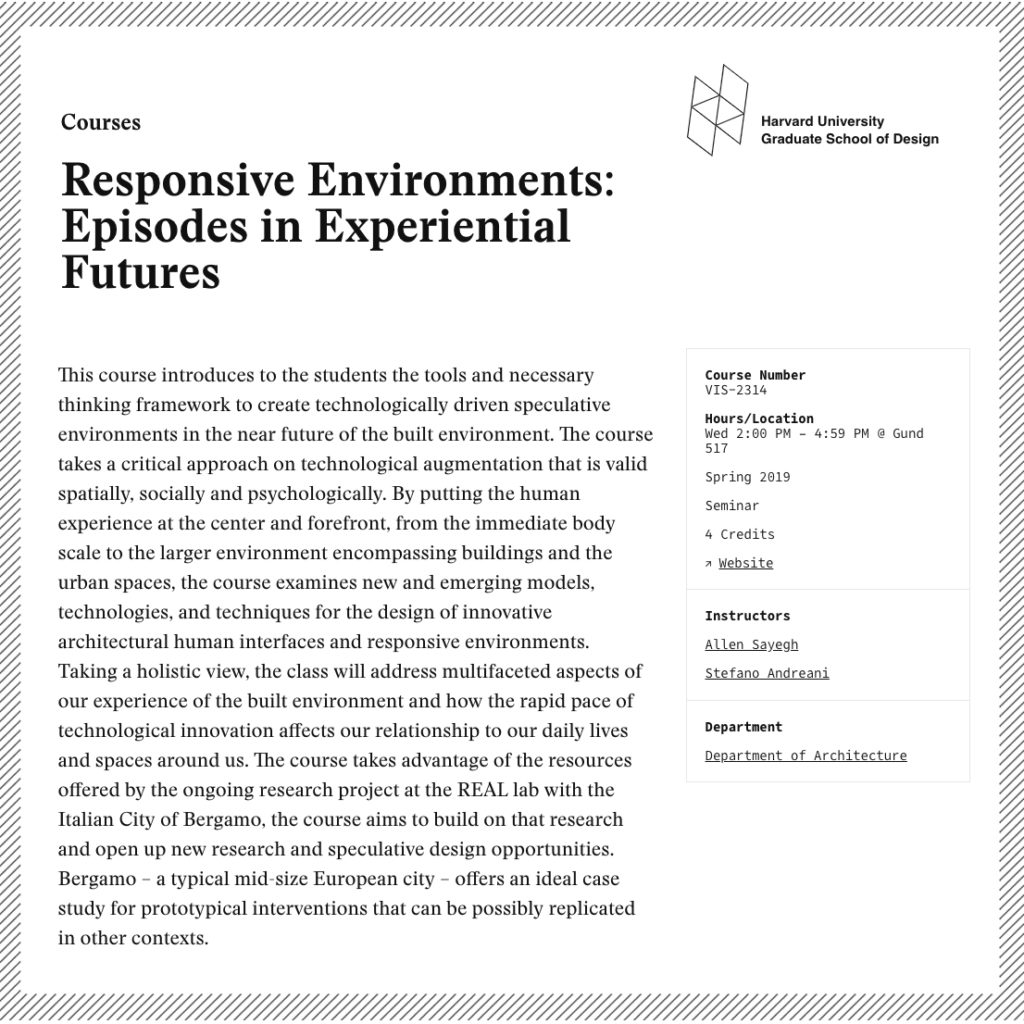This course introduces to the students the tools and necessary thinking framework to create technologically driven speculative environments in the near future of the built environment. The course takes a critical approach on technological augmentation that is valid spatially, socially and psychologically. By putting the human experience at the center and forefront, from the immediate body scale to the larger environment encompassing buildings and the urban spaces, the course examines new and emerging models, technologies, and techniques for the design of innovative architectural human interfaces and responsive environments.
Taking a holistic view, the class will address multifaceted aspects of our experience of the built environment and how the rapid pace of technological innovation affects our relationship to our daily lives and spaces around us. The course takes advantage of the resources offered by the ongoing research project at the REAL lab with the Italian City of Bergamo, and aims to build on that research and open up new research and speculative design opportunities. Bergamo – a typical mid-size European city – offers an ideal case study for prototypical interventions that can be possibly replicated in other contexts.

